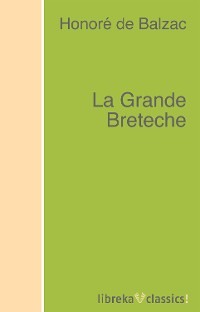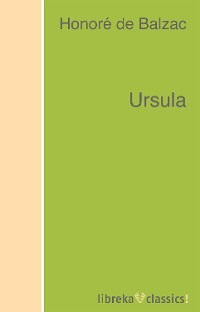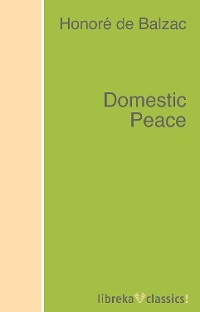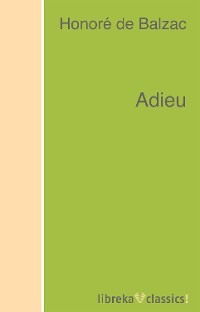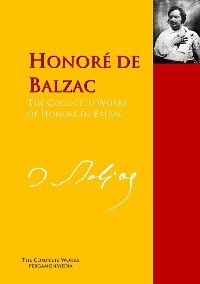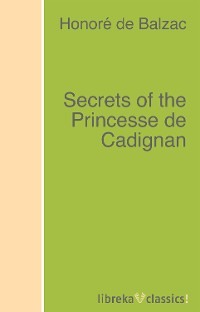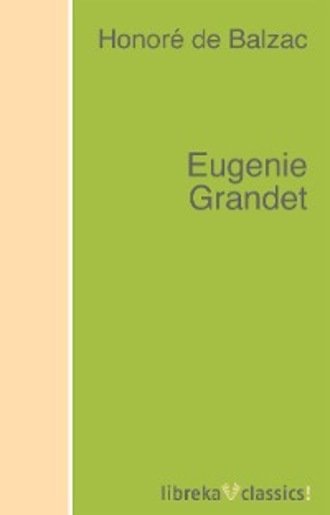
Полная версия
Eugenie Grandet
Physically, Grandet was a man five feet high, thick-set, square-built, with calves twelve inches in circumference, knotted knee-joints, and broad shoulders; his face was round, tanned, and pitted by the small-pox; his chin was straight, his lips had no curves, his teeth were white; his eyes had that calm, devouring expression which people attribute to the basilisk; his forehead, full of transverse wrinkles, was not without certain significant protuberances; his yellow-grayish hair was said to be silver and gold by certain young people who did not realize the impropriety of making a jest about Monsieur Grandet. His nose, thick at the end, bore a veined wen, which the common people said, not without reason, was full of malice. The whole countenance showed a dangerous cunning, an integrity without warmth, the egotism of a man long used to concentrate every feeling upon the enjoyments of avarice and upon the only human being who was anything whatever to him,—his daughter and sole heiress, Eugenie. Attitude, manners, bearing, everything about him, in short, testified to that belief in himself which the habit of succeeding in all enterprises never fails to give to a man.
Thus, though his manners were unctuous and soft outwardly, Monsieur Grandet's nature was of iron. His dress never varied; and those who saw him to-day saw him such as he had been since 1791. His stout shoes were tied with leathern thongs; he wore, in all weathers, thick woollen stockings, short breeches of coarse maroon cloth with silver buckles, a velvet waistcoat, in alternate stripes of yellow and puce, buttoned squarely, a large maroon coat with wide flaps, a black cravat, and a quaker's hat. His gloves, thick as those of a gendarme, lasted him twenty months; to preserve them, he always laid them methodically on the brim of his hat in one particular spot. Saumur knew nothing further about this personage.
Only six individuals had a right of entrance to Monsieur Grandet's house. The most important of the first three was a nephew of Monsieur Cruchot. Since his appointment as president of the Civil courts of Saumur this young man had added the name of Bonfons to that of Cruchot. He now signed himself C. de Bonfons. Any litigant so ill-advised as to call him Monsieur Cruchot would soon be made to feel his folly in court. The magistrate protected those who called him Monsieur le president, but he favored with gracious smiles those who addressed him as Monsieur de Bonfons. Monsieur le president was thirty-three years old, and possessed the estate of Bonfons (Boni Fontis), worth seven thousand francs a year; he expected to inherit the property of his uncle the notary and that of another uncle, the Abbe Cruchot, a dignitary of the chapter of Saint-Martin de Tours, both of whom were thought to be very rich. These three Cruchots, backed by a goodly number of cousins, and allied to twenty families in the town, formed a party, like the Medici in Florence; like the Medici, the Cruchots had their Pazzi.
Madame des Grassins, mother of a son twenty-three years of age, came assiduously to play cards with Madame Grandet, hoping to marry her dear Adolphe to Mademoiselle Eugenie. Monsieur des Grassins, the banker, vigorously promoted the schemes of his wife by means of secret services constantly rendered to the old miser, and always arrived in time upon the field of battle. The three des Grassins likewise had their adherents, their cousins, their faithful allies. On the Cruchot side the abbe, the Talleyrand of the family, well backed-up by his brother the notary, sharply contested every inch of ground with his female adversary, and tried to obtain the rich heiress for his nephew the president.
This secret warfare between the Cruchots and des Grassins, the prize thereof being the hand in marriage of Eugenie Grandet, kept the various social circles of Saumur in violent agitation. Would Mademoiselle Grandet marry Monsieur le president or Monsieur Adolphe des Grassins? To this problem some replied that Monsieur Grandet would never give his daughter to the one or to the other. The old cooper, eaten up with ambition, was looking, they said, for a peer of France, to whom an income of three hundred thousand francs would make all the past, present, and future casks of the Grandets acceptable. Others replied that Monsieur and Madame des Grassins were nobles, and exceedingly rich; that Adolphe was a personable young fellow; and that unless the old man had a nephew of the pope at his beck and call, such a suitable alliance ought to satisfy a man who came from nothing,—a man whom Saumur remembered with an adze in his hand, and who had, moreover, worn the bonnet rouge. Certain wise heads called attention to the fact that Monsieur Cruchot de Bonfons had the right of entry to the house at all times, whereas his rival was received only on Sundays. Others, however, maintained that Madame des Grassins was more intimate with the women of the house of Grandet than the Cruchots were, and could put into their minds certain ideas which would lead, sooner or later, to success. To this the former retorted that the Abbe Cruchot was the most insinuating man in the world: pit a woman against a monk, and the struggle was even. "It is diamond cut diamond," said a Saumur wit.
The oldest inhabitants, wiser than their fellows, declared that the Grandets knew better than to let the property go out of the family, and that Mademoiselle Eugenie Grandet of Saumur would be married to the son of Monsieur Grandet of Paris, a wealthy wholesale wine-merchant. To this the Cruchotines and the Grassinists replied: "In the first place, the two brothers have seen each other only twice in thirty years; and next, Monsieur Grandet of Paris has ambitious designs for his son. He is mayor of an arrondissement, a deputy, colonel of the National Guard, judge in the commercial courts; he disowns the Grandets of Saumur, and means to ally himself with some ducal family,—ducal under favor of Napoleon." In short, was there anything not said of an heiress who was talked of through a circumference of fifty miles, and even in the public conveyances from Angers to Blois, inclusively!
At the beginning of 1811, the Cruchotines won a signal advantage over the Grassinists. The estate of Froidfond, remarkable for its park, its mansion, its farms, streams, ponds, forests, and worth about three millions, was put up for sale by the young Marquis de Froidfond, who was obliged to liquidate his possessions. Maitre Cruchot, the president, and the abbe, aided by their adherents, were able to prevent the sale of the estate in little lots. The notary concluded a bargain with the young man for the whole property, payable in gold, persuading him that suits without number would have to be brought against the purchasers of small lots before he could get the money for them; it was better, therefore, to sell the whole to Monsieur Grandet, who was solvent and able to pay for the estate in ready money. The fine marquisate of Froidfond was accordingly conveyed down the gullet of Monsieur Grandet, who, to the great astonishment of Saumur, paid for it, under proper discount, with the usual formalities.
This affair echoed from Nantes to Orleans. Monsieur Grandet took advantage of a cart returning by way of Froidfond to go and see his chateau. Having cast a master's eye over the whole property, he returned to Saumur, satisfied that he had invested his money at five per cent, and seized by the stupendous thought of extending and increasing the marquisate of Froidfond by concentrating all his property there. Then, to fill up his coffers, now nearly empty, he resolved to thin out his woods and his forests, and to sell off the poplars in the meadows.
II
It is now easy to understand the full meaning of the term, "the house of Monsieur Grandet,"—that cold, silent, pallid dwelling, standing above the town and sheltered by the ruins of the ramparts. The two pillars and the arch, which made the porte-cochere on which the door opened, were built, like the house itself, of tufa,—a white stone peculiar to the shores of the Loire, and so soft that it lasts hardly more than two centuries. Numberless irregular holes, capriciously bored or eaten out by the inclemency of the weather, gave an appearance of the vermiculated stonework of French architecture to the arch and the side walls of this entrance, which bore some resemblance to the gateway of a jail. Above the arch was a long bas-relief, in hard stone, representing the four seasons, the faces already crumbling away and blackened. This bas-relief was surmounted by a projecting plinth, upon which a variety of chance growths had sprung up,—yellow pellitory, bindweed, convolvuli, nettles, plantain, and even a little cherry-tree, already grown to some height.
The door of the archway was made of solid oak, brown, shrunken, and split in many places; though frail in appearance, it was firmly held in place by a system of iron bolts arranged in symmetrical patterns. A small square grating, with close bars red with rust, filled up the middle panel and made, as it were, a motive for the knocker, fastened to it by a ring, which struck upon the grinning head of a huge nail. This knocker, of the oblong shape and kind which our ancestors called jaquemart, looked like a huge note of exclamation; an antiquary who examined it attentively might have found indications of the figure, essentially burlesque, which it once represented, and which long usage had now effaced. Through this little grating—intended in olden times for the recognition of friends in times of civil war—inquisitive persons could perceive, at the farther end of the dark and slimy vault, a few broken steps which led to a garden, picturesquely shut in by walls that were thick and damp, and through which oozed a moisture that nourished tufts of sickly herbage. These walls were the ruins of the ramparts, under which ranged the gardens of several neighboring houses.
The most important room on the ground-floor of the house was a large hall, entered directly from beneath the vault of the porte-cochere. Few people know the importance of a hall in the little towns of Anjou, Touraine, and Berry. The hall is at one and the same time antechamber, salon, office, boudoir, and dining-room; it is the theatre of domestic life, the common living-room. There the barber of the neighborhood came, twice a year, to cut Monsieur Grandet's hair; there the farmers, the cure, the under-prefect, and the miller's boy came on business. This room, with two windows looking on the street, was entirely of wood. Gray panels with ancient mouldings covered the walls from top to bottom; the ceiling showed all its beams, which were likewise painted gray, while the space between them had been washed over in white, now yellow with age. An old brass clock, inlaid with arabesques, adorned the mantel of the ill-cut white stone chimney-piece, above which was a greenish mirror, whose edges, bevelled to show the thickness of the glass, reflected a thread of light the whole length of a gothic frame in damascened steel-work. The two copper-gilt candelabra which decorated the corners of the chimney-piece served a double purpose: by taking off the side-branches, each of which held a socket, the main stem—which was fastened to a pedestal of bluish marble tipped with copper—made a candlestick for one candle, which was sufficient for ordinary occasions. The chairs, antique in shape, were covered with tapestry representing the fables of La Fontaine; it was necessary, however, to know that writer well to guess at the subjects, for the faded colors and the figures, blurred by much darning, were difficult to distinguish.
At the four corners of the hall were closets, or rather buffets, surmounted by dirty shelves. An old card-table in marquetry, of which the upper part was a chess-board, stood in the space between the two windows. Above this table was an oval barometer with a black border enlivened with gilt bands, on which the flies had so licentiously disported themselves that the gilding had become problematical. On the panel opposite to the chimney-piece were two portraits in pastel, supposed to represent the grandfather of Madame Grandet, old Monsieur de la Bertelliere, as a lieutenant in the French guard, and the deceased Madame Gentillet in the guise of a shepherdess. The windows were draped with curtains of red gros de Tours held back by silken cords with ecclesiastical tassels. This luxurious decoration, little in keeping with the habits of Monsieur Grandet, had been, together with the steel pier-glass, the tapestries, and the buffets, which were of rose-wood, included in the purchase of the house.




